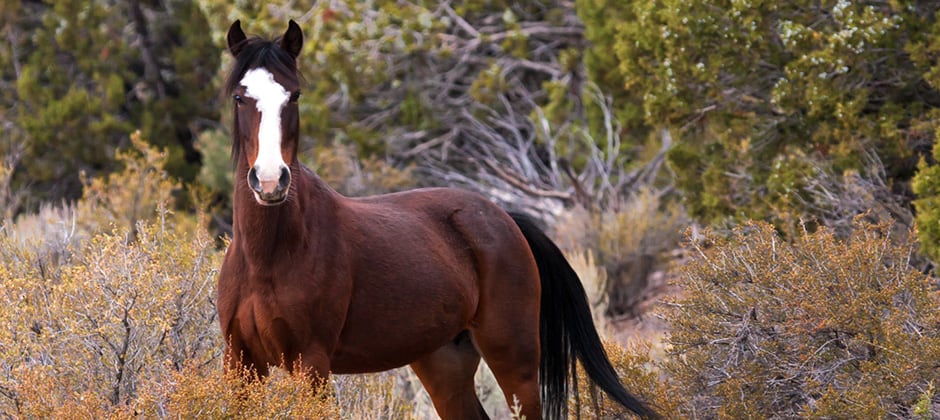Share this article
Wild horse board meets, amidst gathers and scrutiny
The Bureau of Land Management last week began gathering wild horses in eastern Nevada, as part of its ongoing efforts to reduce the ecologically feral species’ overpopulation on public lands and reduce impacts to the range. The gather is occurring in an area known as the Triple B Complex, which includes about 2,500 square miles in BLM’s Elko and Ely districts.
Officials plan to remove as many as 800 wild horses from the range during the course of the gather, which is estimated to last about four weeks. BLM hopes to bring the area’s population from approximately 3,400 to 2,600, which would still be above the target population level of between 474 and 489 horses.
The Wildlife Society has regularly advocated for federal agencies to reduce populations of free-roaming horses and burros on public lands. The invasive species can compete with native wildlife and damage their habitats.
The National Wild Horse and Burro Advisory Board met last week in Boise, Idaho. The federal advisory committee is comprised of stakeholders representing a diverse range of interests and provides advice and recommendations to the BLM and USFS as the agencies carry out their responsibilities under the 1971 Wild Free-Roaming Horses and Burros Act.
During the three-day meeting, Bruce Rittenhouse, acting chief of BLM’s Wild Horse and Burro Program, addressed the panel. He indicated that, next month, the agency will submit to Congress a detailed report regarding strategies to reduce wild horse and burros’ populations. The report will include protocols for a permanent sterilization program and an analysis of the merits of euthanizing old and unadoptable horses, as well as anticipated funding needs.
Congress instructed BLM to produce the report in February, as part of a spending bill. While Rittenhouse assured the board members that the forthcoming report was very detailed, he declined to share specifics of the proposal with the panel, since the report is still undergoing internal review before submittal to Congress. He did share that the agency’s goal is to reduce the current populations of wild horses and burros down to the “appropriate management level” of 26,690 horses over the next 10 to 15 years.
Casey Hammond, BLM’s acting chief, also spoke during the meeting and said that euthanasia of surplus horses is not a population control option that the agency plans to pursue.
A Senate committee is also preparing to scrutinize the BLM’s management of wild horses. The Forest, Public Lands and Mining Subcommittee of the Energy and Natural Resources Committee will hold a hearing on July 16 to examine long-term management options for the Bureau of Land Management’s Wild Horse and Burro Program.
According to BLM’s most recent estimate, from March of this year, 88,090 wild horses and burros live on BLM-managed public lands in ten Western states. This population is more than three times what the public lands can sustainably support and is the highest population estimate since Congress passed the Wild Free-Roaming Horses and Burros Act in 1971.
Read TWS’s Issue Statement on Feral Horses and Burros in North America.
Header Image: BLM’s management of wild horses and burros is coming under increasing Congressional scrutiny as populations rise. ©James Marvin Phelps








